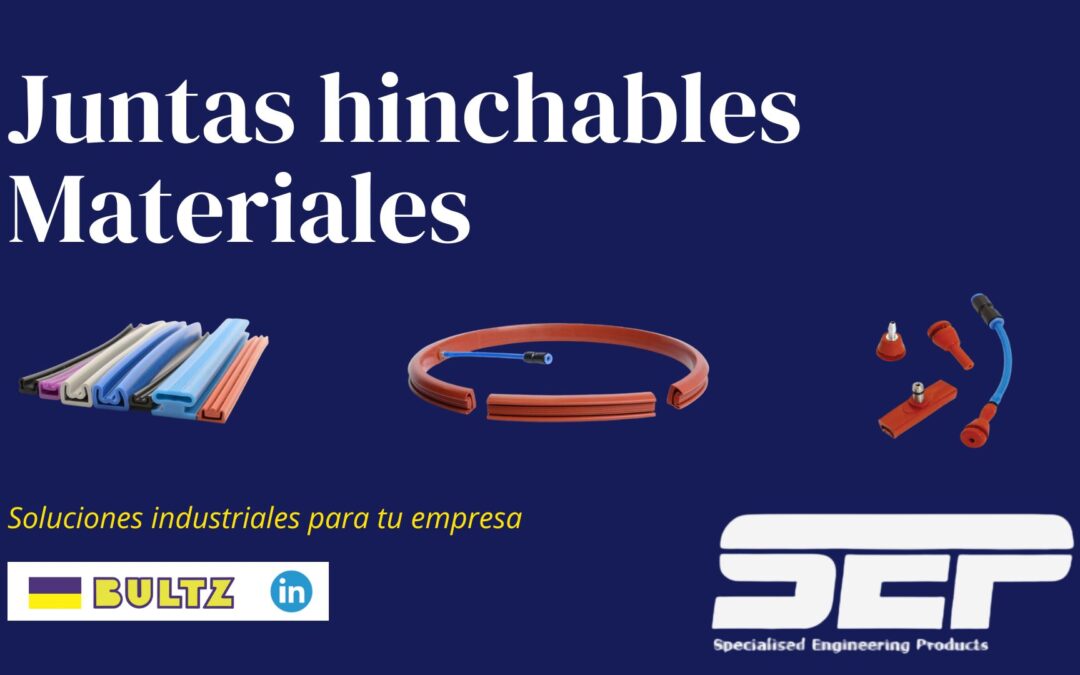As we discussed in previous articles, inflatable seals, unlike standard O-rings, provide airtight sealing when inflated. By increasing their volume, they leave no space for fluids, odors, or chemicals to propagate. The closures they offer are hermetic, making them ideal for use in sectors like the chemical industry.
In some of our previous articles, we covered the features and functionality of these types of seals. In this article, we will focus on analyzing the available materials from our brand SEP and the working environments for which each material is used.
Inflatable Seals: Materials
Some of the materials that make up these seals are typically silicone, EPDM, and Viton. The SEP brand offers a wide variety of seal profiles made from these materials. In all these cases, inflatable seals comply with FDA regulations and all hygiene standards.
Next, we will briefly analyze the main characteristics of Viton, silicone, and EPDM:
– Viton
FKM rubber, commonly known as Viton, offers valuable properties for industrial use. Viton is less prone to burning at high temperatures compared to other sealing rubbers. Notably, Viton performs exceptionally well in demanding environments with extremely high temperatures or chemical exposure. The material can withstand temperatures of up to 200°C for short working periods.
– Silicone
Similar to Viton, silicone offers excellent temperature properties without being affected by factors like sunlight or ozone. Although it may not be suitable for many hydrocarbons and steam, silicone exhibits good resistance to lubricants or oils. Silicone is suitable for use in industries such as food, provided it is designated as «food-grade silicone.»
– EPDM
EPDM rubber corresponds to the International abbreviation Ethylene Propylene Diene Methylene. It is a synthetic rubber that offers excellent resistance to aging, including ozone and high temperatures, as we’ve seen in the case of Viton and silicone. Unlike silicone, EPDM can be used in environments where steam and hot water are prevalent, but it is less effective with greases and lubricants.
Materials of Inflatable Seals
We can observe that all the materials offered by the SEP brand for its inflatable seals meet an essential requirement: resistance to high temperatures and aging. A hermetic seal is used to ensure that the interior remains completely isolated from the exterior (concentrating high temperatures, pressure, chemicals, etc.). It is also used as a safety measure to work in secure conditions.
For this purpose, it is indispensable that the material is highly resistant and capable of working in harsh environments. Depending on the industry and the type of application, it is essential to understand the characteristics of each material before making a selection.
The SEP Brand (Specialised Engineering Products)
The manufacturer SEP has extensive experience in the design and production of inflatable seals. This experience is reflected in the precision of molding rubber, both natural and synthetic: HNBR, VITON, NITRILO, and EPDM. For sectors like food and beverages, they can offer inflatable seals in clean, contaminant-free materials.
On their website, you can find all the details about their inflatable seal products.
YouTube content:
SEP’s YouTube channel also features several video tutorials on their products and materials.
INFLATABLE SEALS AT BULTZ
At Bultz, we are distributors of inflatable seals from the SEP brand. If your company needs sealing or inflatable seal solutions, our team of experts will advise you on adopting these solutions. We have many years of experience advising and distributing our brands for both dynamic and static sealing.
In addition to the SEP brand, we represent and distribute other brands that you can find on our website.
CONTACT OUR TEAM

